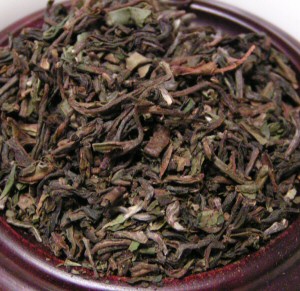Message
Types of Tea
Pure Black Teas
Conventionally, black tea may be divided into two large groups: pure teas and blends. Blends are composed of different teas, which could have been plucked in different parts of the world, for example, very often Kenyan tea is blended with Ceylon tea. Pure tea is tea plucked in one country, one region, one single estate, or at one and the same time. Thus, such invariant purity makes the term ‘pure tea’ conditional. Now I shall explain why. |
||
| Pure tea (Twinings Vintage Darjeeling Tea) and tea blend (Twinings Prince of Wales Tea). | ||
Pure tea plucked in one country (for example, Pure Ceylon Tea) is the simplest variant of this purity. It means that a particular pack of tea contains tea plucked in Ceylon exclusively. Can you imagine Ceylon? Not precisely? Nevermind. Trust me — it is quite a big island. Moreover, there are many tea plantations in Ceylon. Some of them are plain, where tea grows strong, and rough in taste and almost flavorless, and some are mountainous, where tea has exquisite taste and fine flavor. Thus a pack labeled ‘Pure Ceylon Tea’ may contain a blend of absolutely different Ceylon teas. In fact, pure tea plucked in one country is a blend of teas which grow on one territory, which may appear very large. From the consumer’s point of view, such teas are almost completely unpredictable. Of course, Indian, Ceylon, Kenyan, and other teas possess some characteristics typical for their whole countries, but how should I know what they have put in every single pack?
Everything is much easier and more definite with pure teas plucked in one region (e.g. Assam, Darjeeling, or Uva). There are several large tea-growing regions around the world; in India, China, Ceylon and some other places. Teas plucked in these regions have their own rather distinctive features. One can learn how to tell Assam (tea plucked in the Indian state it is named after) from Darjeeling (another Indian tea plucked at the foothills of the Himalayas) after the first — second cup of tea (of course, if tea is of good quality). Strictly speaking, ‘pure regional teas’ are also blends — the same state of Assam is divided into many tea estates, and each estate grows tea with its own nuances of taste and flavor. But nuances are nuances, and typical characteristics of all Assams are similar. From the consumer’s stand point, such teas are most convenient of all pure teas — knowing characteristics of this or that tea, and knowing what kind of tea party you are planning to have, you can find the right tea even in our supermarkets.
Next point in the list of pure teas is estate — that is teas plucked at one certain estate of one particular tea-growing region. A pack of such tea will be labeled as ‘Single Estate Tea’. These words themselves do not mean anything and do not add to the quality of the tea. Just imagine wine labeled ‘Single Vineyard Wine’… In addition to the indication of the fact that tea was plucked in one single estate, the label should specify the name of the estate (e.g. Tukdah Estate Darjeeling” — such name would mean that the tea you are going to try was plucked in tea-growing region Darjeeling, in Tukdah estate). Retaining qualities typical for the region, estate teas have their own specific characteristics, which change from one estate to another, and are highly appreciated by experts.
 |
||
| Single Estate Darjeeling Tea (Whittard Darjeeling Nagri Farm First Flush Tea). | ||
There is more to it. Most generally, tea is plucked four times a year. First plucking takes place after the period which may be called hibernation (wrong, but clear) — concentration of wholesome matter, flavor, and taste in tea leaves is maximal then. First flush tea (tea of the earliest plucking) is of the highest quality. In addition to qualities typical for the region and estate zest, it may evoke unmotivated tremendous delight of the one who drinks it. First flush tea possesses various small jocundities, sometimes absolutely unpredictable. It can be a light menthol hint on the tip of the tongue, malty nuance when breathing out, freshly-sweet flowery aftertaste — almost anything! A label for such tea along with the name of the region and estate must contain magic words ‘First Flush’ (e.g. ‘Kaley Valley First Flush Darjeeling’).
First flush estate teas are also unpredictable in their taste and flavor, but their unpredictability is the sign of high quality. It is connected with the fact that high-quality tea nuances depend on numerous reasons — take weather, for example.
Second flush teas by their quality are close to first flush teas; sometimes they can even surpass them. However, such is mentality, everything that comes first — be that love or tea plucking — is valued higher. Third and forth flush tea (even if they were plucked at a good tea-garden) is not that highly valued — it is used to produce ordinary tea, and are often included into blends.
So much for the ‘tea purity’. In the end I want to make two remarks. First, estate teas are very rare in our supermarkets. Second, these teas are not for daily use. They are not to wash down sandwiches with them, not to drink in passing, not every guest can understand them. These are teas for infrequent pleasure. And they require some prior knowledge and training.
Denis Shumakov